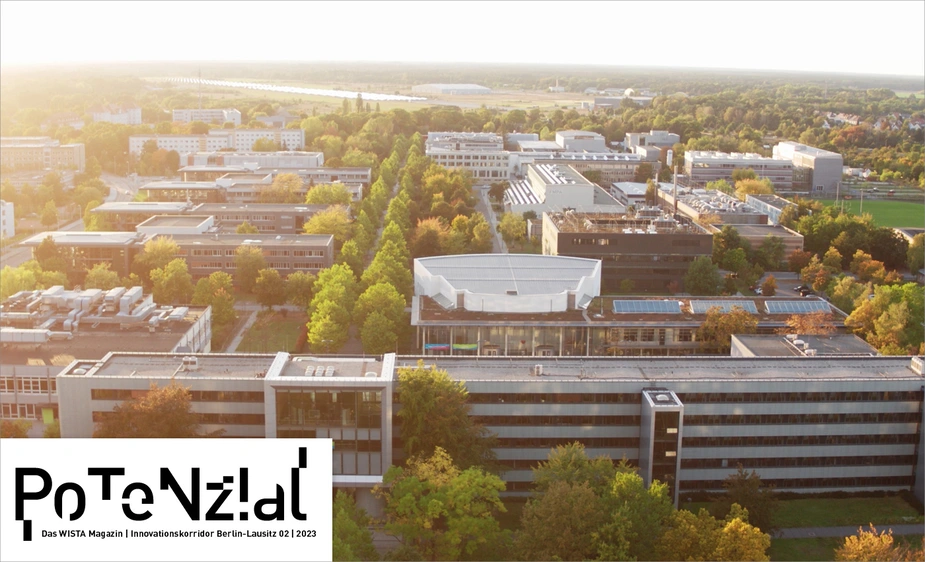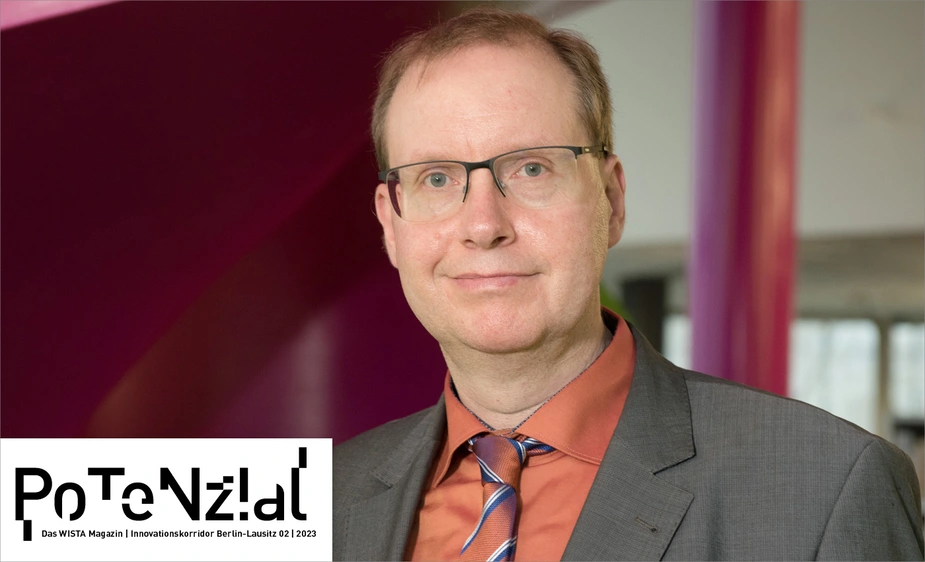Learning from the best
The successful Adlershof Technology Park also serves as a blueprint for the development of the Lusatia Science Park
A 420-hectare innovation landscape with international appeal is to emerge on the northern periphery of Cottbus. Co-initiator of this outstanding project for Lusatia’s economic restructuring is the Brandenburg University of Technology (BTU) Cottbus-Senftenberg.
Though it still requires some level of imagination, 10,000 people will soon work here, excellent research institutions will explore new solutions for the transition to clean energy, health, and other global transformation processes, more than 200 companies will find ideal conditions for innovation and transfer, and the area will be home to new flats, daycare centres, and restaurants.
Michael Hübner, Vice President of Research and Transfer at BTU, has no shortage of imagination in this regard. With a PhD in electrical engineering, he took over the chair for computer engineering in 2018. Before this, he had a conversation with BTU’s then-president and today’s minister for the economy in Brandenburg, Jörg Steinbach. He had lured him in with the words: “It’s all happening in Lusatia.”
After the 2038 coal exit was decided, a need for new ideas for the future of the region emerged. They are homing in on science and research, high technology, and attracting research-driven companies. BTU is expected to play a major role in this. Funds are being made available to finance forward-looking research projects, among many other things. Hübner’s university also received an inquiry to that effect.
“We collected many ideas while keeping the requirements of the Structural Reinforcement Act for Mining Regions in mind,” says Hübner. “One question kept coming up: How do we avoid creating research islands that don’t talk to or interact with each other?” Thus, the idea for the Lusatia Science Park was born. The research at BTU is to form the backbone of the science park.
“At the time,” remembers Hübner, “we were already having talks about another idea for economic restructuring – innovation corridors.” This is how the conversation with WISTA Management GmbH got going. “We want to learn from the best,” says Hübner, who sees the unmistakable parallels to Adlershof’s Science and Technology Park. The site where the park is being built is a former airfield. Plans include a campus similar to that in Adlershof with an excellent infrastructure that brings together work, research, and living. The planners were “embraced”, so to speak, supported unflinchingly and selflessly. “It’s very motivating.”
People with ample expertise are working on designing Lusatia’s Science Park. A registered association acts as a bridge between numerous non-university research institutions and institutes at the federal level. As a next step, the foundation of a company is being considered – much like WISTA – that is responsible for planning, development, legal matters, sales, and marketing. “The crux is speed,” says Hübner, who says highly interesting inquiries from the industry have already been received. Currently, the development plans are being drawn up in close cooperation with the city government in Cottbus, first buildings are due to be completed in four years’ time. “We must make use of the momentum,” says the BTU vice president with emphasis.
The first concrete projects are already underway. A research training group on hydrogen has been set up with the Federal Institute for Materials Research and Testing (BAM). “We had to do something together and so Ulrich Panne, who is the head of BAM, approached us at BTU,” Hübner remembers. The connections to Adlershof, as well as DRESDEN-concept Science and Innovation Campus, are manifold. Potsdam Science Park is also involved in the development of Lusatia’s Science Park. Lacking a name at the political level at first, the innovation axis to southeast Brandenburg has now become the pilot project “Innovation Corridor Berlin-Lusatia”, which will ultimately lead to the setting up of Lusatia Science Park.
What are the expected effects? “We want to become the equivalent to Adlershof in the south of Brandenburg.” Hübner is sure that the park will create “a huge boost for Brandenburg” and make Berlin’s peripheral regions more attractive. Tax revenue will bring prosperity to the region and attract qualified workers, researchers, students, and companies. For the university, too, Michael Hübner is expecting “incredible multiplying effects.”
Rico Bigelmann for POTENZIAL
- Lausitz Science Park - BTU Cottbus-Senftenberg (b-tu.de)
- Vice-President for Research and Transfer - BTU Cottbus-Senftenberg (b-tu.de)

